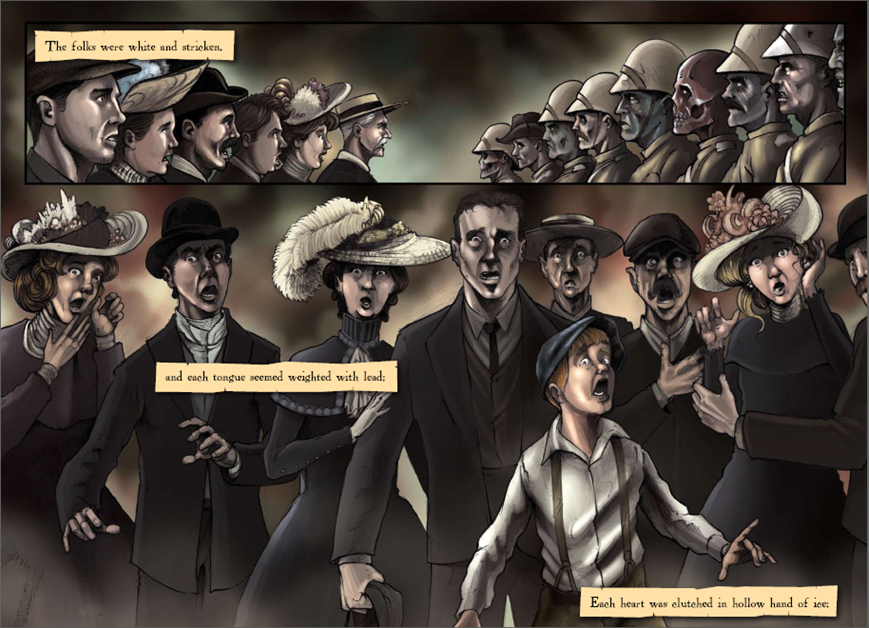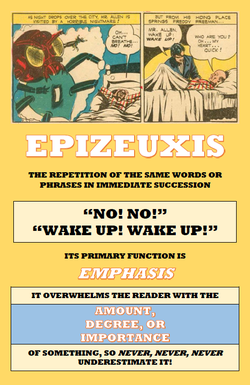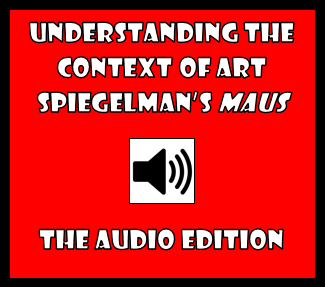|
by Glen Downey, Comics in Education, www.comicsineducation.com There are terms specific to comics which don't have corollaries in traditional print narratives and which may not have direct filmic equivalents. However, understanding these terms is central to understanding the genre. PanelA geometric shape that contains a scene from a visual narrative. It can occupy the whole or a part of a page. Panels are the organizational framework of comics--the moments of action--and the reader must stitch the sequence of panels together to derive meaning from the work. GutterThe gutters are the areas between panels that are sometimes referred to as the breaks or white space that separate the action of a visual narrative. Their importance cannot be underestimated though it is sometimes challenging to conceptualize this. It is in the gutters of a graphic story that the reader makes meaning of the transition from one panel to the next. They can represent the passage of time, a change of place, or no discernible movement at all. Narrative / Caption BoxThese boxes are often located at the corners of panels and provide narration to accompany the dialogue in a graphic story. These boxes are often at their most effective when they are characterized by narrative economy, quickly setting a scene, indicating a transition, or otherwise establishing the time, place, and/or circumstances that a reader must understand before making meaning of an individual panel or panel sequence. Dialogue Balloon / BubbleCharacters in a graphic novel or comic use dialogue balloons to talk to one another. Often these balloons are oblate (flattened) ellipses that allow typewritten dialogue to fit within them while avoiding an overabundance of white space. Whispers can sometimes be conveyed through dialogue balloons that are formed from dashed lines while dialogue "bubbles" that look like miniature clouds are almost always reserved for things that a character is thinking rather than saying aloud. Sound EffectsAnother characteristic of graphic stories that is unique to visual narrative is the use of onomatopoeic sound effects, typically written as highly stylized words across a page in a form that serves as an echo to the sense. Hence, an artist attempting to depict an explosion might use a thick, sans serif font to construct the word "BOOM!" across a panel. These sound effects provide an aural accompaniment to a narrative sequence or individual moment in a graphic story and help the reader more fully understand and process what is happening.
0 Comments
Your comment will be posted after it is approved.
Leave a Reply. |
Glen DowneyDr. Glen Downey is an award-winning children's author, educator, and academic from Oakville, Ontario. He works as a children's writer for Rubicon Publishing, a reviewer for PW Comics World, an editor for the Sequart Organization, and serves as the Chair of English and Drama at The York School in Toronto. If you've found this site useful and would like to donate to Comics in Education, we'd really appreciate the support!
Archives
February 2019
|




 RSS Feed
RSS Feed
